|
| Links | email Sam Droege sdroege@usgs.gov for a excel spreadsheet of ID information for the Eastern Melandrena males
- Hosts
|
80x5 -
240x3 -
240x4 -
320x1 -
320x2 -
320x3 -
640x1 -
640x2
Set display option above.
Click on
images to enlarge. |
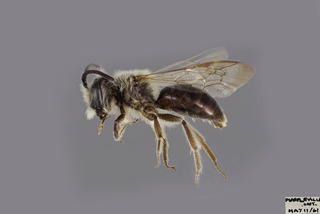
© Copyright Laurence Packer 2014
· 7
Andrena dunningi MALE CFP comp |
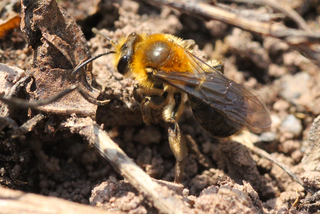
© Copyright Hadel Go 2014 · 6
Andrena dunningi f |
|
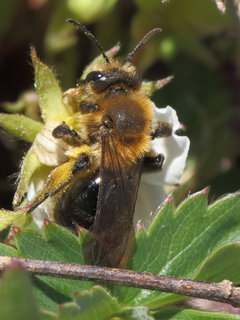
Michael Veit · 6
Andrena dunningi, f on Fragaria -- |
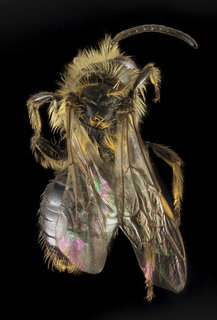
© Copyright source/photographer
· 5
Andrena dunningi, U, Back, MD, Frederick Co |
|
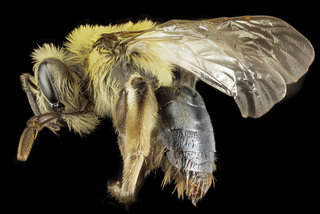
© Copyright source/photographer
· 5
Andrena dunningi, U, Blount Co., Tennessee, side |
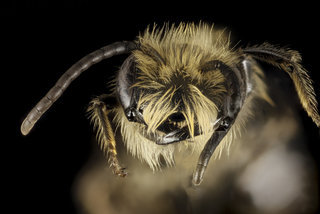
© Copyright source/photographer
· 5
Andrena dunningi, U, Face, MD, Frederick Co |
|
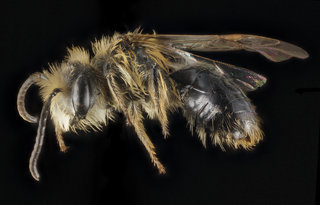
© Copyright source/photographer
· 5
Andrena dunningi, U, Side, MD, Frederick Co |
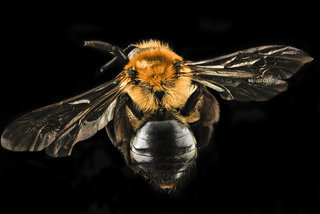
© Copyright source/photographer
· 5
Andrena dunningi, F, back, MD, Harford County |
|
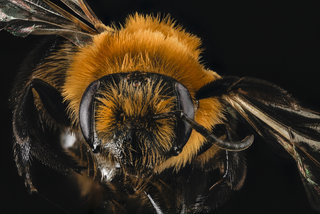
© Copyright source/photographer
· 5
Andrena dunningi, F, face, MD, Harford County |
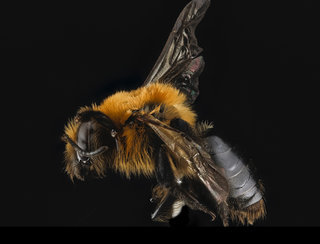
© Copyright source/photographer
· 5
Andrena dunningi, F, side, MD, Harford County |
|
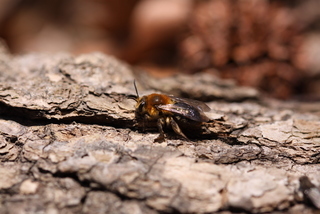
© Copyright Eli Wyman, 2009
· 3
Andrena dunningi |
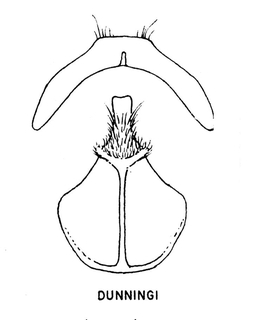
Mitchell, Bees of the Eastern United States, Vol. I, 1960 · 1
Andrena dunningi, figure18d |
|
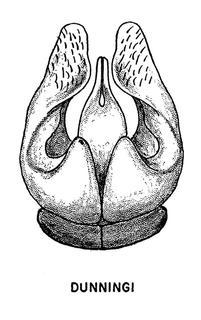
Mitchell, Bees of the Eastern United States, Vol. I, 1960 · 1
Andrena dunningi, figure19b |
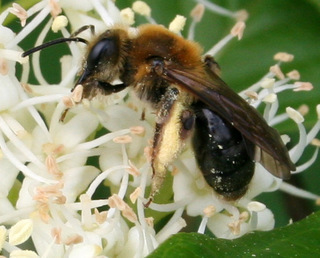
Thom Wilson of Baltimore City · 1
Andrena dunningi |
|
Overview |
Reprinted with permission of the American Entomological Society from:
Bouseman, J. K., LaBerge, W. E. 1978. A revision of the bees of the genus Andrena of the Western Hemisphere. Part IX. Subgenus Melandrena. Transactions of the American Entomological Society 104: 275-390.
Please report text errors to: leah at discoverlife dot org.
This large northeastern bee resembles Andrena pruni in its pale vestiture. The female of dunningi can be readily separated from that of pruni by its broad facial fovea. The female can be separated from carlini and other dark species by the pale tibial scopal hairs and the pale thoracic pleural hairs and from sayi by the rounded apical margin of the labral process. The male of dunningi is readily separated from that of pruni by the lack of a tuft of long dependent hairs on sternum 6 and from other members of the subgenus by its pale vestiture and rounded apical margin of the labral process.
FEMALE. MEASUREMENTS AND RATIOS. — N = 20; length, 10-13 mm; width, 3.0-4.5 mm; wing length, M = 4.89 0.205 mm; FL/FW, M = 0.98 ± 0.005; FOVL/FOVW, M = 3.44 ± 0.047.
INTEGUMENTAL COLOR. — Black except as follows: mandible with apical third rufescent; flagellar segments 2-10 dark brown to reddish-brown below; tegula piceous; wing membranes hyaline, slightly infumate, yellowish, veins dark reddish-brown; terga with apical areas often with rufescent reflections; sterna 2-5 often with rufescent reflections basally; distitarsi dark rufescent; tibial spurs testaceous to reddish-brown.
STRUCTURE. — Antennae as in carlini but flagellar segment 2 about as long as segment 3, quadrate; segments 4-10 longer than broad. Eyes each about four times as long as broad, inner margins diverging slightly towards mandibles. Mandible, galea and stripes as in carlini. Maxillary palpus as in carlini but segmental ratio about as 0.8:1.0:0.8:0.8:0.7:0.7. Labial palpus as in carlini but ratio about as 1.0:0.6:0.5:0.5. Labral process large, entire, flat, shiny, apical margin evenly rounded; labrum below process as in carlini. Clypeus shiny except at extreme base, with deep round punctures of irregular size and spacing, separated by half to one puncture width, with broad median impunctate line. Supraclypeal area and face above antennal fossae as in carlini. Facial fovea as in carlini but separated from lateral ocellus by one ocellar diameter or slightly less. Vertex above lateral ocellus equals two ocellar diameters or slightly less, sculptured as in carlini. Genal area as in carlini.
Thoracic form and sculpturing as in carlini except as follows: mesoscutum with small posteromedial area with sparse punctures; propodeal dorsal enclosure roughened by weak irregular rugulae; propodeal lateral surface without vermiculate rugulae posteriorly. Wing venation as in carlini but second submarginal cell often much narrower anteriorly than posteriorly.
Metasomal tergal sculpturing as in carlini but punctures minute and sparse and surface usually duller, shagreening relatively coarse. Pygidial plate relatively narrow, V-shaped with blunt or rounded apex. Sternal sculpturing as in carlini.
VESTITURE. — Dark ochraceous to pale ochraceous except as follows: facial fovea often with upper half with brown hairs; vertex often with brown hairs mixed with pale; face below ocelli often with brown hairs; terga 2-6 or 3-6 with at least some brown hairs at least basally; terga 5 and 6 largely golden brown; sternal hairs brown 10 ochraceous; dark specimens with legs with dark brown hairs on tarsi, inner surfaces tibiae, outer surfaces fore and middle tibiae, on and surrounding basitibial plate, posterior surfaces middle and hind femora, and medial scopal hairs brown shading to yellow-ochraceous anteriorly and posteriorly; pale specimens with leg hairs pale ochraceous except brown on and just below basitibial plate and inner surfaces basitarsi. Terga without pale fasciae. Pollen-collecting hairs normal for subgenus.
MALE. MEASUREMENTS AND RATIOS. — N = 20; length, 8-12 mm; width, 2-3 mm; wing length, M = 4.06 ± 0.199 mm; FL/FW, M = 0.90 ± 0.005; FSl;rS2, M = 1.20 ± 0.012.
INTEGUMENTAL COLOR. — Black except as follows: mandible with apical third or less rufescent; flagellar segments 3-11 dark brown to dark reddish-brown below; tegula piceous; wing membranes slightly infumate, yellowish, veins reddish-brown; terga and sterna usually with rufescent reflections basally; distitarsi dark rufescent and often basitarsi and tibiae dark rufescent; tibial spurs testaceous to red.
STRUCTURE. — Antenna as in carlini but flagellar segment 2 longer than segment 3. Eyes each about three and three-fourths times as long as broad, inner margins diverging slightly towards mandibles. Mandibles decussate, as in carlini. Galea as in carlini. Maxillary palpus as in carlini but segmental ratio about u 0.9; 1.0:0.9:0.9:0.7:0.7. Labial palpus as in carlini but ratio about as 1.0:0.6:0.6:0.6. Labral process large, entire, shiny, with apical margin rounded; labrum apical to process punctate, not sulcate. Clypeus short but slightly longer than one-third minimum interocular distance; with crowded punctures and coarse shagreening dulling surface. Supraclypeal area and face above antennal fossae as in carlini. Vertex above lateral ocellus equals about one and one-half ocellar diameters, surface dulled by abundant punctures and coarse tessellation. Genal area in profile equals about one and one-half times eye width, sculptures as in female.
Thoracic form and sculpturing as in female but propodeal dorsal enclosure often smoothly tessellate except at extreme base. Wing venation as in female.
Metasomal tergal sculpturing as in carlini but punctures usually obscure and often surface duller, Pygidial area not present. Sterna 2-5 sculptured as in carlini. Sternum 6 with apical margin turned downwards, without internal raised triangular area; punctate in apical third or less.
Terminalia as in figures 28-32; note gonostylus with sparse hairs and sternum 7 with blunt apical lobe without emargination (sternum 8 as in carlini in lateral view).
VESTITURE. — Generally ochraceous to pale ochraceous except as follows: terga 3-5 occasionally with sparse basal hairs brown in part; hind tibia rarely with brown hairs below basitibial plate; inner surface hind tarsi golden.
Reprinted with permission from: Mitchell, T.B. 1960. Bees of the Eastern United States. North Carolina Agricultural Experiment Station Technical Bulletin No. 141.
FEMALE. — Length 10 mm.; clypeus broadly convex, projecting about one-half below suborbital line, shining, with a distinct, somewhat elevated, median, impunctate line on each side of which the punctures are rather shallow and close but quite distinct; facial foveae rather broad above, occupying about two-thirds of area between eyes and ocelli, covered with pale ochraceous tomentum; space between margin of vertex and lateral ocelli slightly shorter than the distance between them; cheeks slightly broader than eyes, rounded posteriorly, rather dull, minutely and obscurely punctate; malar space short; basal segment of flagellum subequal to 2nd and 3rd combined; process of labrum rather large, broadly semicircular; pubescence of head and thorax ochraceous; thoracic integument dull, tessellate, punctures of scutum rather shallow and obscure, quite close except in posterior middle, scutellum somewhat more shining, more deeply but irregularly punctate; pleura more densely tessellate but rather smooth, with fine shallow punctures anteriorly, but becoming impunctate posteriorly; enclosure of propodeum dull and tessellate; propodeal corbicula quite dense, with a distinct anterior fringe, ochraceous; trochanteral floccus well developed, pale ochraceous; tibial scopa quite dense, hairs moderately elongate, simple, more brownish; pubescence of fore and mid tibiae and all the tarsi more fuscous, the basitarsi distinctly narrower than their respective tibiae; 2nd submarginal cell fully equaling 3rd in length, receiving 1st recurrent near middle; abdominal terga rather smooth, obscurely violaceous, apical depressed areas rather obscure, becoming very narrowly reddened along rims, occupying medially about one-third the length of the disc, nearly impunctate, the remainder of the discs with very fine scattered punctures, rather sparse medially, becoming rather close toward sides, discal pubescence very short, suberect, pale in general, fasciae not developed, tergum 5 with a rather dense apical, fulvous fimbria.
MALE. — Length 9 mm.; clypeus broad and short, slightly convex, projecting but very slightly below suborbital line, dull, quite closely and finely punctate on each side of an obscure median impunctate line, densely long pubescent; space between margin of vertex and lateral ocelli slightly less than the distance between them; cheeks broader than eyes, rounded posteriorly (as in hilaris, fig. 21), rather dull, very minutely and obscurely punctate; malar space very short; basal segment of flagellum longer than 2nd segment, about equaling 3rd; process of labrum rather large, subtriangular, apex narrowly rounded; mandibles slender, rather elongate, slightly curved, with a distinct, inner, subapical tooth, but without a basal inferior projection, overlapping about one-third; pubescence of head, thorax and legs entirely pale ochraceous; thoracic integument rather dull, tessellate, punctures of scutum shallow, rather fine and close except in center posteriorly where they are quite sparse, fine and rather close, but irregular on scutellum; pleura more densely tessellate, the punctures minute, well separated and obscure; enclosure of propodeum dull, tessellate, obscurely short striate along basal margin; all basitarsi slender and elongate, considerably narrower than their respective tibiae; 2nd submarginal cell subequal in length to 3rd, receiving 1st recurrent near middle; abdominal terga somewhat shining, apical depressed areas rather narrow, nearly impunctate, remaining portion of discs very finely and rather closely punctate, but punctures becoming more widely separated in center of discs, discal pubescence very short, suberect, entirely pale, fasciae not developed; apical portion of sternum 8 rather short and broad, with a pronounced, subcarinate, ventral, median protuberance, densely pubescent from this to the markedly narrowed tip which is very slightly incised medially; penis valves very slightly enlarged basally, not excavated, gonocoxites rather short, considerably dilated and flexed apically, gonocoxal lobes rather strongly produced, narrowly rounded.
DISTRIBUTION. — Minnesota to Quebec and the New England states, south to North Carolina; April to June. One record, October 11, 1938, at Orono, Maine, is considered exceptional.
FLOWER RECORDS. — Crataegus, Malus and Salix. Robertson (1929) records this species on Claytonia, Gleditsia, Ribes, Rubus, Taraxacum and Viburnum. It is also recorded by Brittain and Newton (1934) on Narcissus.
|
|
|
Identification | |
Extracted from: Charles Robertson (1900). Some Illinois Bees. Trans. Acad. Sci. Of st. Louis.
Female. Black; head, thorax and femora clothed with fulvous
pubescence which is brightest on scutellum, palest beneath, a few blackish hairs about ocelli and on clypeus, Boccus pale, tibiae and tarsi with blackish pubescence, the scopae on hind femora and tibiae, however, pale beneath; clypeus shining, coarsely punctured, a median raised line impunctate: process of labrum semicircular; third joint of antennae about equaling next two together; wings fusco-hyaline, nervures fusco-ferruginous, second and third submarginal cells subequal;abdomen shining, nearly bare nearly impunetate, anal fimbria dull fulvous. Length 10-12 mm.
Male. Resembles the male of A. ltirticeps, but the black hairs on vertex and about eyes are wanting, and the second and third submarginal cells are subequal. Length 9 mm.
|
|
|
Names | |
|
|
| Supported by | |
Updated: 2024-04-19 01:54:59 gmt
|